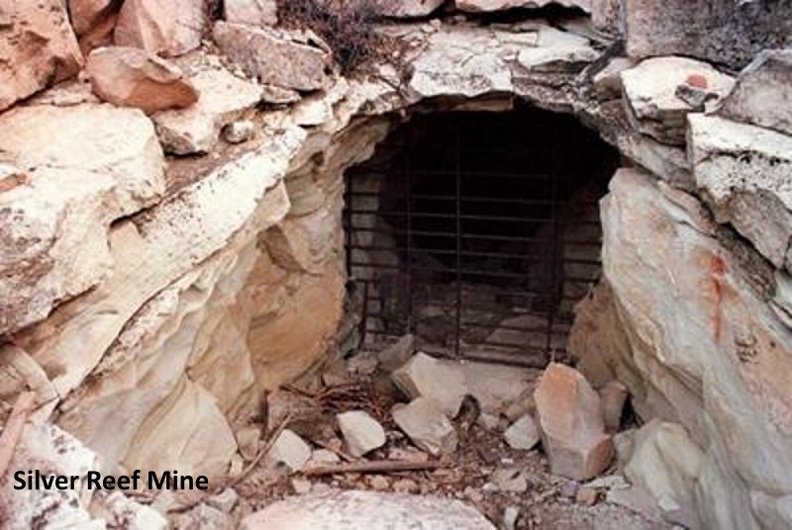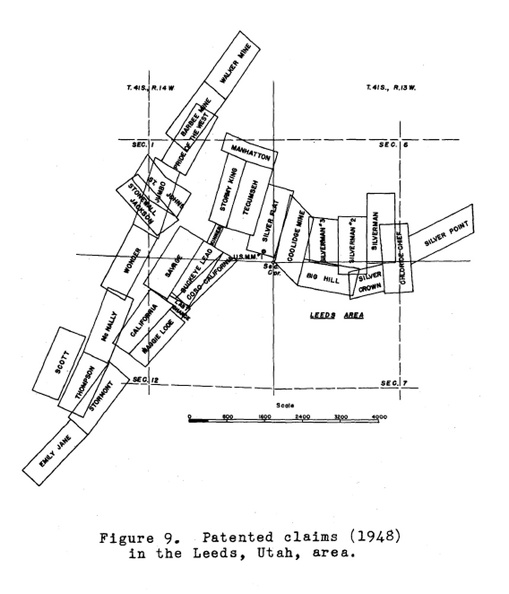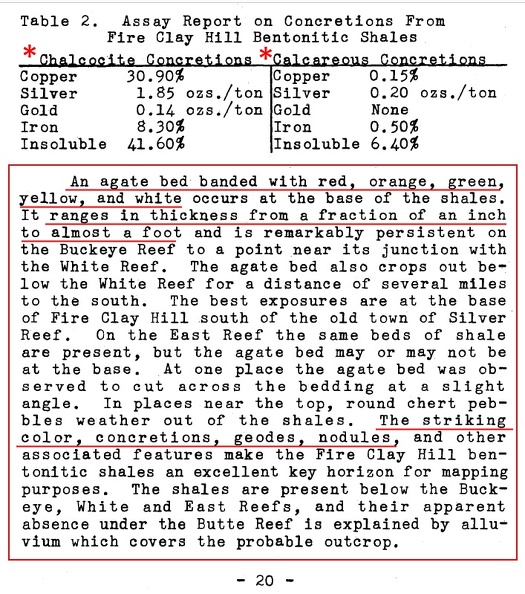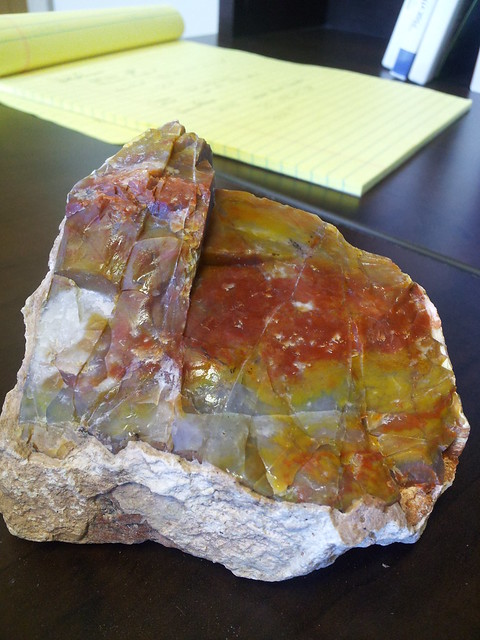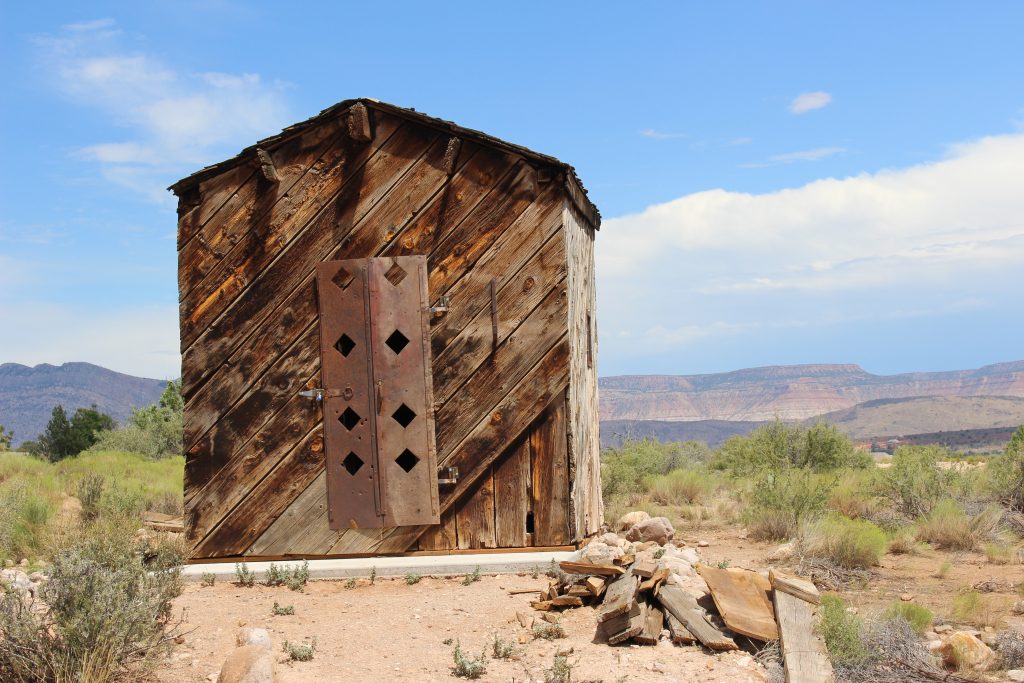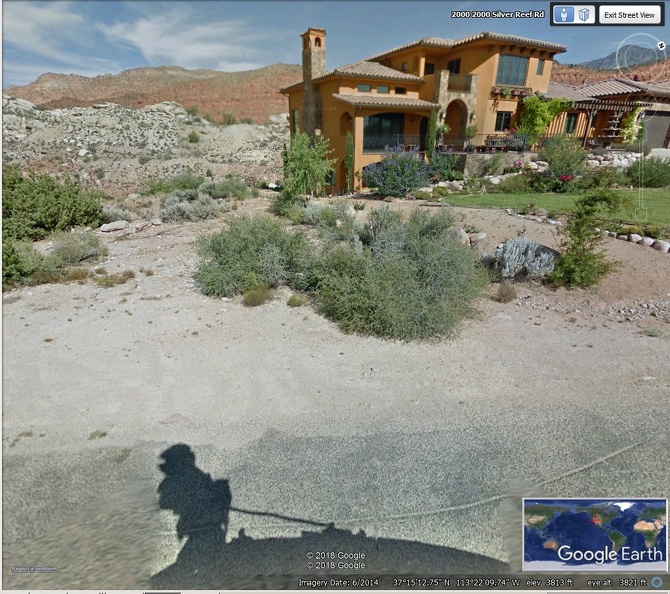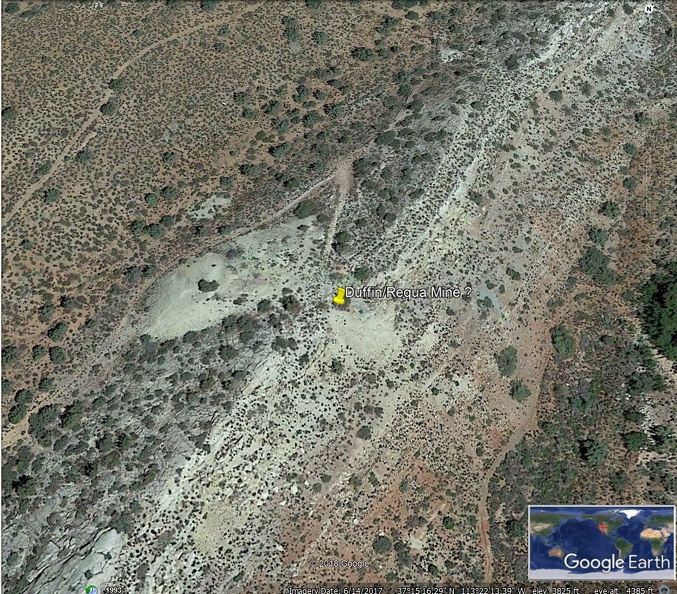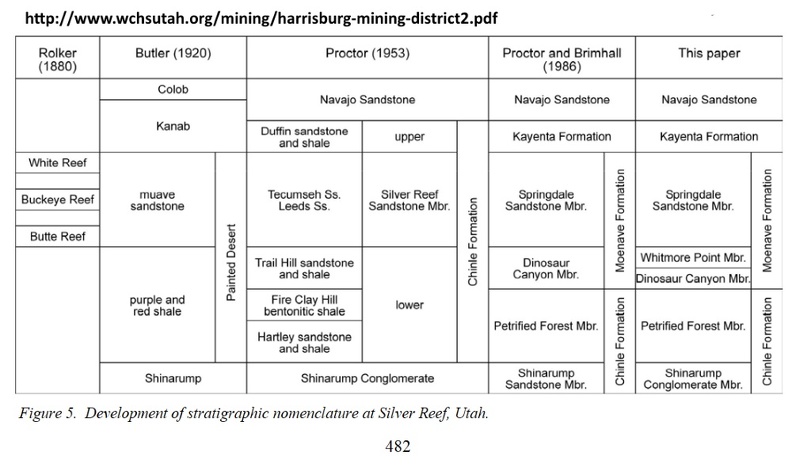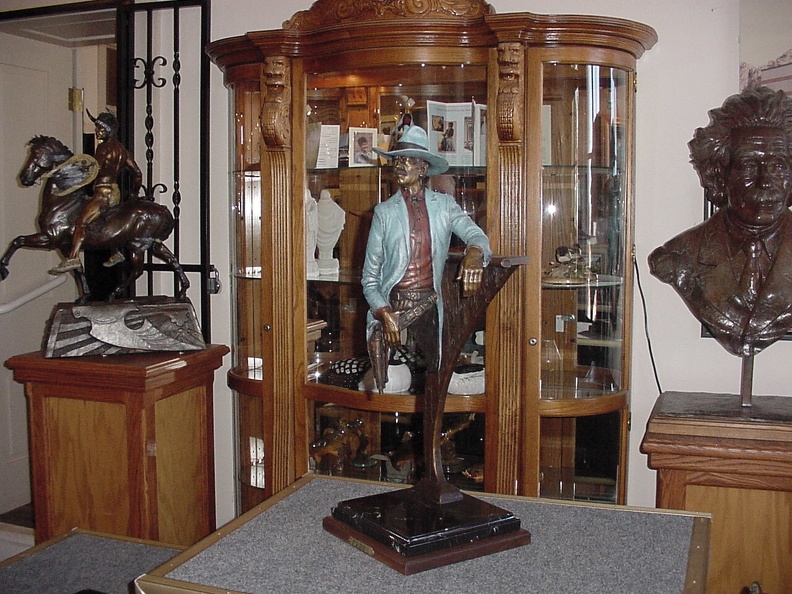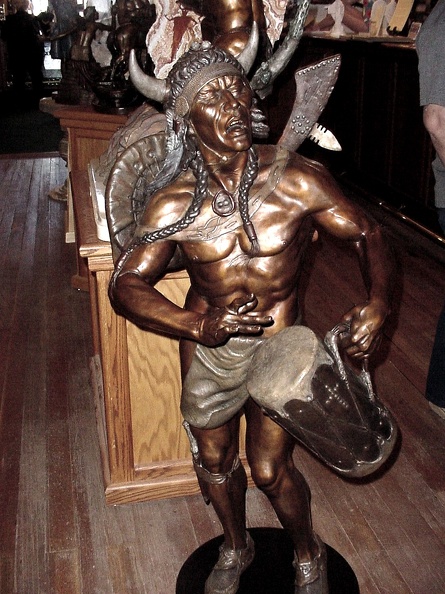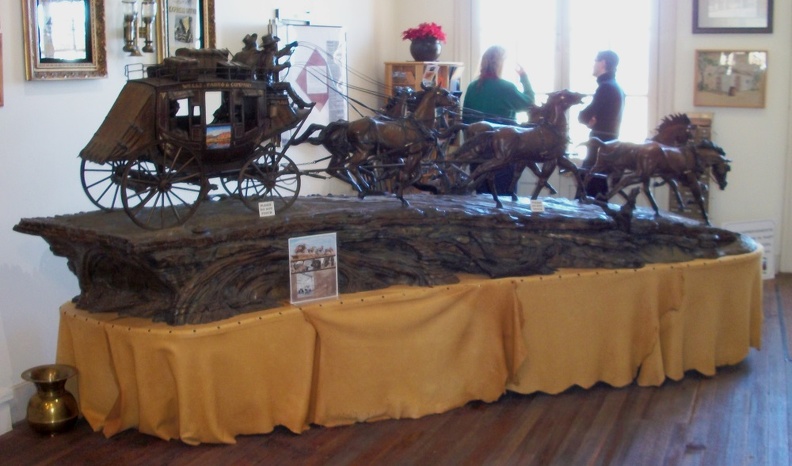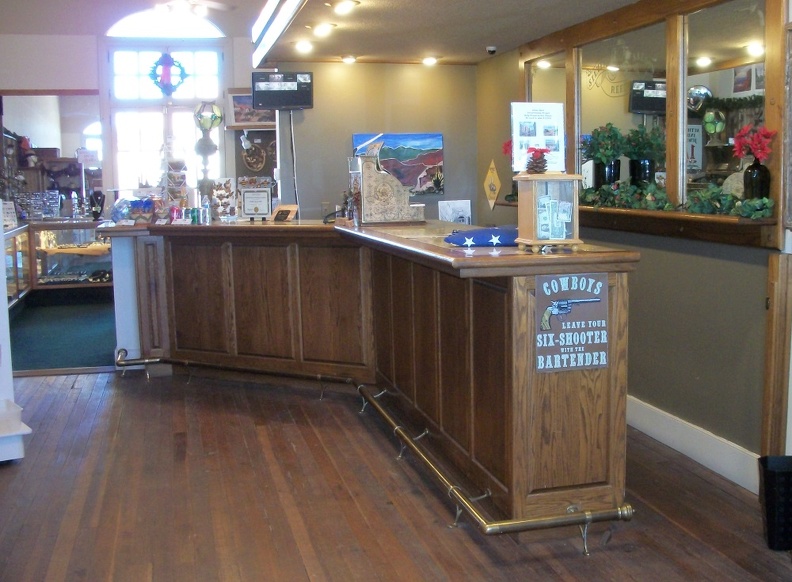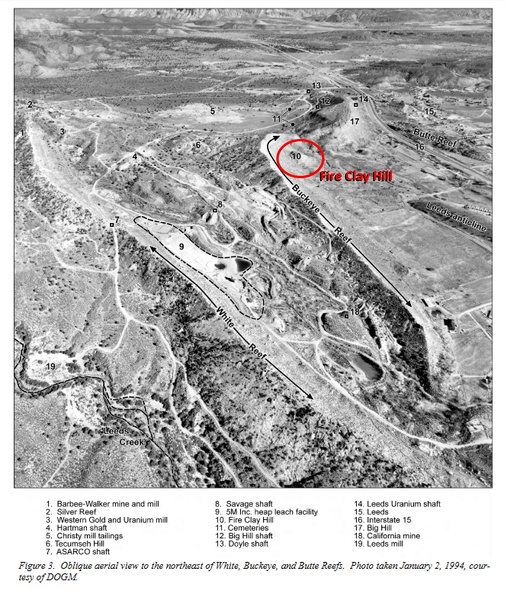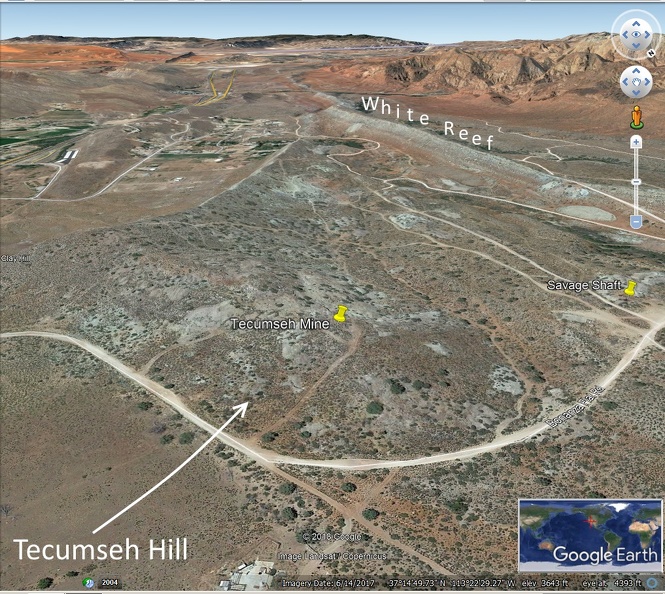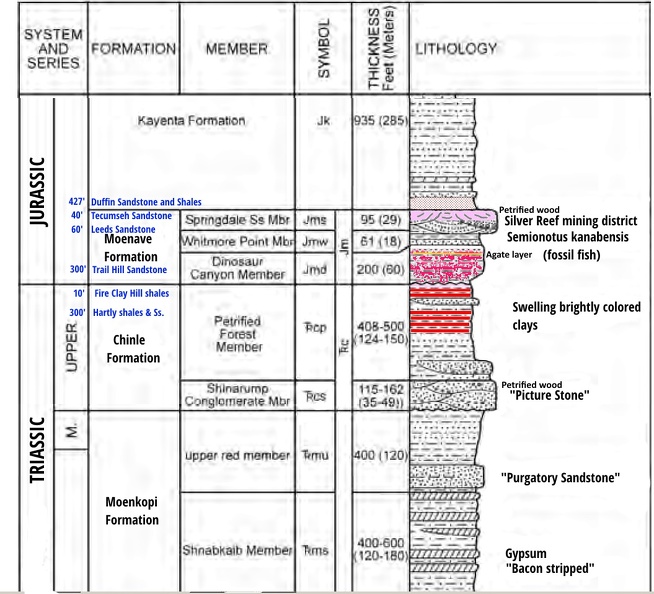Post by Admin on Apr 8, 2021 10:05:33 GMT -7
NOTE: I just imported years of posts at RTH here and it all needs to be revised. I'll get to it when I can. 4/8/2021
In 1866 John Kemple, an older and experienced prospector and assayer, took a room for the winter at the Harrisburg home of Orson Adams.
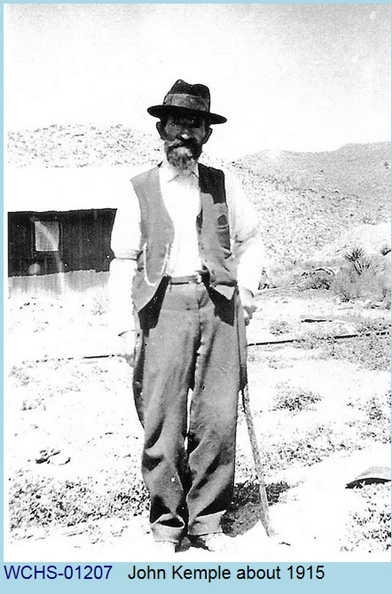
While wandering the hills west of town he noticed the green and blue copper stains in the rocks.
Assaying samples, he found valuable amounts of silver was present! He sent ore samples to other assayers for conformation.
H. H. Smith, of Shaunty, Beaver County said:
"Kemple must be crazy to ask me to assay a sand rock."

John Kemple recorded the first claim in his name as follows:
“said location commencing at a monument and notice placed on the ledge about three hundred yards southwest of O.B. Adam‟s house (Harrisburg) and running from thence in a northerly direction (1500 ) feet. This ledge shall be known as the Pride of the West Ledge and the Kemple Company. Location June the 18th, 1874.
Recorded June 26, 1874. Locator – John Kemple”
Recorded June 26, 1874. Locator – John Kemple”
Where was the Orson Adams House?

Sgt Orson Bennett Adams (B. 9 March 1815 Alexander, Genessee County, New York
Death: 4 February 1901 Leeds, Washington County, Utah)
Veteran of Mormon Battalion in 1846, Original settler in Parowan in 1851.
The Adams family was among the nine families "called" in 1861 by the Church of Jesus Christ of Latter Day Saints to settle at the confluence of Leeds and Quail Creeks; the new settlement was named Harrisburg. Orson selected the most western 200 acres on Quail Creek for his home.

Willard G. McMullin, a master stone mason, arrived here in 1862 and constructed the Adams home, as well as many of the other residences of Harrisburg, during the period between 1863 and 1865. From 1864 until the early 1890s, Orson B. Adams, his wife Susannah, two sons, and eventually two granddaughters lived in this two-room sandstone dwelling.
The land was donated to the BLM and the house restored in 2009.

Ir is on the road to the Red Cliffs recreation area.

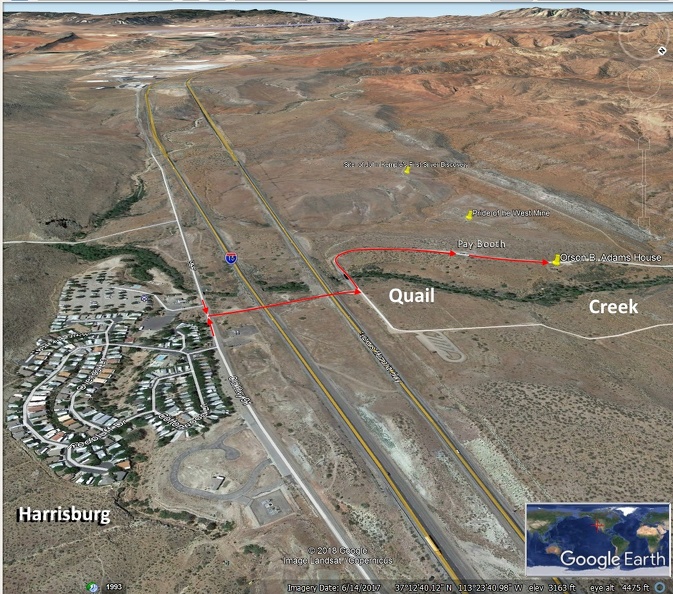

Kemple was getting old and little work was ever done at the mine.
Silver Reef is a five mile wide fifteen mile (+) long gouge in Triassic Chinle rocks about ten miles northeast of St George Utah

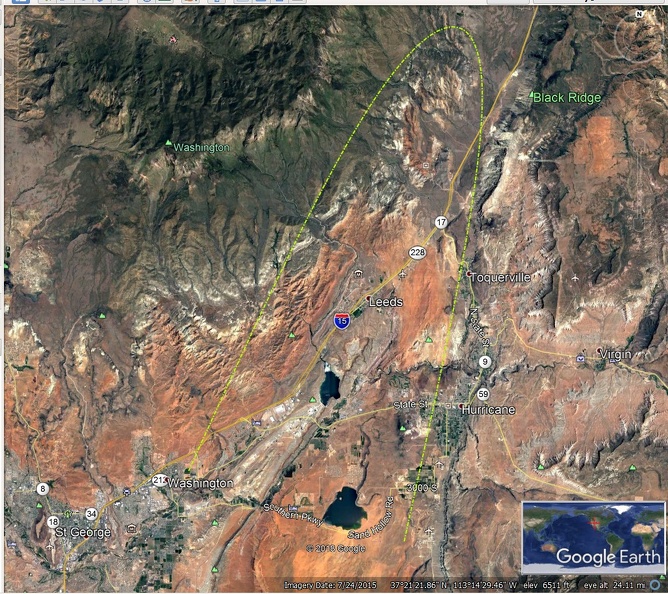
I wrote about it on Mindat in 2011.
www.mindat.org/article.php/1114/Silver+Reef%2CUtah
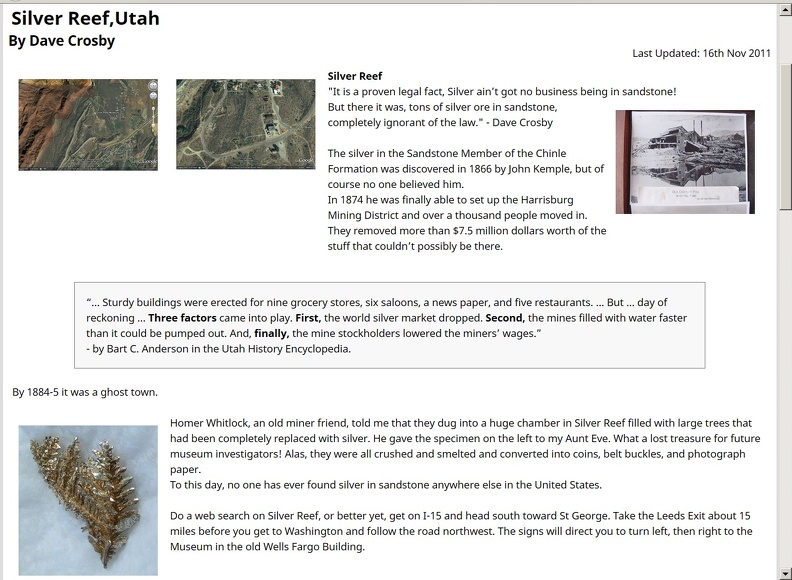
The major geological study of the area was done in 1953, Just before Gene Shoemaker convinced the world that ancient impacts still existed on earth.
ugspub.nr.utah.gov/publications/bulletins/B-44.pdf
GEOLOGY OF THE SILVER REEF (HARRISBURG) MINING DISTRICT
WASHINGTON COUNTY UTAH
By PAUL DEAN PROCTOR - April 1953
Because of its historic significance in orogenesis and because of its strategic position at the boundary line of the Colorado Plateau with the Basin and Range Province as these provinces are exhibited in Southern Utah, the Silver Reef district was given priority by the Survey as a subject of study. While it was undertaken primarily as a means of throwing additional light, by the application of modern means of research, on the historic problem of the formation of economic deposits of silver in sandstone the presence of small amounts of uranium, vanadium and selenium in the mineral assemblage making up the Silver Reef ore bodies was an intriguing aspect of the subject, and the fact that the Silver Reef district was situated on what was believed to be a possible oil structure furnished an additional reason for giving preference to this investigation.
The problem of the genesis of the Silver Reef are bodies is one which has received the close attention of students of economic geology through-out the world. These ore bodies constitute the only occurrence of its size of silver in sandstone un-connected in any demonstrable way with an igneous source.
It will be noted from the following Bulletin that Dr. Proctor comes to the conclusion, after weighing all the evidence from his own and from previous investigations, that the silver was derived from particles originally disseminated in volcanic ash. He thinks that these were in turn concentrated by solution and re-precipitated by organic matter along stream channels of the Buckeye Reef member of the Chinle formation.
However, to some of those familiar with the wide-spread occurrence of the Chinle bentonitic members assumed to have come from volcanic ash, it may be difficult to visualize the mechanism by which the silver is assumed to have been concentrated into an economic deposit in the Silver Reef area while not receiving similar concentration in any of the many areas to the east of the Silver Reef district where these same Chinle beds are well exposed.
Another circumstance which may have greater significance than is obvious from Proctor's treatment is the apparent correlation between the structure of the area and the Silver Reef ore deposits. It appears that the economic deposits form a U-shaped outline around the nose of the Leeds anticline.
This would seem to suggest that the folding preceded the emplacement of the minerals so as to have influenced their mechanism of accumulation.
One wonders if there may not have been some connection between the great andesitic accumulations in Pine Valley Mountain to the north and the hydro-thermal solutions which conceivably traveled south-ward and upward on the Leeds anticline becoming colder in their long transit through the porous sandstones, which acted as conduits, until they no longer could retain in solution their metallic burden.
The Silver Reef mining area in southwestern Utah contains the only known occurrence in the United States of commercial bodies of silver ore with minor copper-uranium-vanadium minerals in sandstone. The ore bodies are restricted to the Silver Reef sandstone member of the upper Triassic Chinle formation and occur on the limbs and nose of a major anticline and a subsidiary anticline and syncline. A newly recognized north trending normal fault and a thrust fault with a minimum eastward displacement of 1500 feet repeat the ore horizon three times. No constant relationship exists between the mineralization and the folds or faults.
Silver, copper, and minor gold values in a bentonite 300 feet below the ore-bearing horizon, minerals of these metals and lense-like bentonitic shales in the Silver Reef sandstone, and other known occurrences of notable metal content in volcanic tuffs suggest a new theory of origin for these unusual deposits. It is concluded that the metals were primary constituents of original volcanic tuffs in Triassic time; that these metals were dissolved and/or mechanically transported by streams eroding the tuffaceous sediments; that they were later deposited with the sandstone and shales of the Silver Reef area; that further concentration of the metals in the Silver Reef sandstone was by (1) solution in circulating ground water, and (2) precipitation through contact with entombed plant debris and associated bacteria in more permeable buried Triassic stream channels. Folding, erosion, and exposure of the ore horizon is assumed to have resulted in secondary enrichment of the ore deposits by meteoric waters.
WASHINGTON COUNTY UTAH
By PAUL DEAN PROCTOR - April 1953
Because of its historic significance in orogenesis and because of its strategic position at the boundary line of the Colorado Plateau with the Basin and Range Province as these provinces are exhibited in Southern Utah, the Silver Reef district was given priority by the Survey as a subject of study. While it was undertaken primarily as a means of throwing additional light, by the application of modern means of research, on the historic problem of the formation of economic deposits of silver in sandstone the presence of small amounts of uranium, vanadium and selenium in the mineral assemblage making up the Silver Reef ore bodies was an intriguing aspect of the subject, and the fact that the Silver Reef district was situated on what was believed to be a possible oil structure furnished an additional reason for giving preference to this investigation.
The problem of the genesis of the Silver Reef are bodies is one which has received the close attention of students of economic geology through-out the world. These ore bodies constitute the only occurrence of its size of silver in sandstone un-connected in any demonstrable way with an igneous source.
It will be noted from the following Bulletin that Dr. Proctor comes to the conclusion, after weighing all the evidence from his own and from previous investigations, that the silver was derived from particles originally disseminated in volcanic ash. He thinks that these were in turn concentrated by solution and re-precipitated by organic matter along stream channels of the Buckeye Reef member of the Chinle formation.
However, to some of those familiar with the wide-spread occurrence of the Chinle bentonitic members assumed to have come from volcanic ash, it may be difficult to visualize the mechanism by which the silver is assumed to have been concentrated into an economic deposit in the Silver Reef area while not receiving similar concentration in any of the many areas to the east of the Silver Reef district where these same Chinle beds are well exposed.
Another circumstance which may have greater significance than is obvious from Proctor's treatment is the apparent correlation between the structure of the area and the Silver Reef ore deposits. It appears that the economic deposits form a U-shaped outline around the nose of the Leeds anticline.
This would seem to suggest that the folding preceded the emplacement of the minerals so as to have influenced their mechanism of accumulation.
One wonders if there may not have been some connection between the great andesitic accumulations in Pine Valley Mountain to the north and the hydro-thermal solutions which conceivably traveled south-ward and upward on the Leeds anticline becoming colder in their long transit through the porous sandstones, which acted as conduits, until they no longer could retain in solution their metallic burden.
ABSTRACT
The Silver Reef mining area in southwestern Utah contains the only known occurrence in the United States of commercial bodies of silver ore with minor copper-uranium-vanadium minerals in sandstone. The ore bodies are restricted to the Silver Reef sandstone member of the upper Triassic Chinle formation and occur on the limbs and nose of a major anticline and a subsidiary anticline and syncline. A newly recognized north trending normal fault and a thrust fault with a minimum eastward displacement of 1500 feet repeat the ore horizon three times. No constant relationship exists between the mineralization and the folds or faults.
Silver, copper, and minor gold values in a bentonite 300 feet below the ore-bearing horizon, minerals of these metals and lense-like bentonitic shales in the Silver Reef sandstone, and other known occurrences of notable metal content in volcanic tuffs suggest a new theory of origin for these unusual deposits. It is concluded that the metals were primary constituents of original volcanic tuffs in Triassic time; that these metals were dissolved and/or mechanically transported by streams eroding the tuffaceous sediments; that they were later deposited with the sandstone and shales of the Silver Reef area; that further concentration of the metals in the Silver Reef sandstone was by (1) solution in circulating ground water, and (2) precipitation through contact with entombed plant debris and associated bacteria in more permeable buried Triassic stream channels. Folding, erosion, and exposure of the ore horizon is assumed to have resulted in secondary enrichment of the ore deposits by meteoric waters.
I believe that 150 million years ago an exotic comet entered the solar system and broke up, then peppered the earth at this location, at Upheaval Dome, and numerous other world locations, donating a large amount of our silver, gold, vanadium, uranium, etc.

